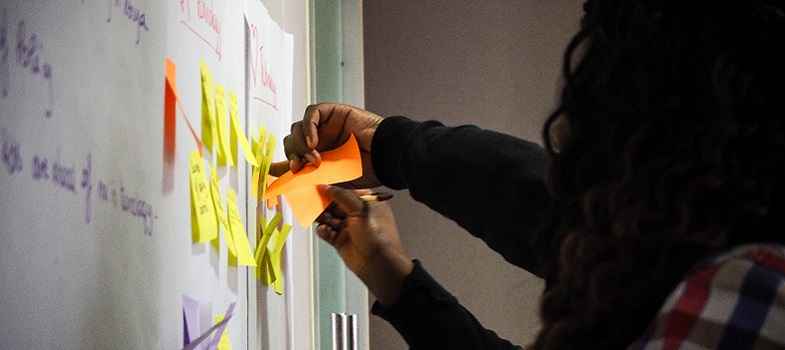Making Digital Decisions: Overcoming barriers
‘About three-quarters of the class have been able to use their smartphones to study, but there is a disadvantage for those who are coming from remote regions.’ (Exam coordinator)
‘When I started my classes, two or three times I switch on the video so that they could see that I’m serious and I’m on duty and I’m there for them. Then to save on bandwidth I switch it off but continued engaging.’ (Faculty member)
Greater use of digital technologies and online learning can remove some barriers to learning, but can create other barriers. It is important to be aware of the different contexts of students and to identify ways of reducing or removing any barriers they could face.
Connectivity and devices
Some approaches to online learning do require constant access to the internet and large quantities of data. However there is a range of approaches and ways to make online learning take into account any limitations. Students with sporadic or limited access can still engage and can be supported by ploys such as:
- Providing downloadable materials and recordings that can be studied offline.
- Reducing reliance on synchronous video, large images and media files.
- Providing alternative text versions of media.
There should also be clear guidance on the devices that students can use for their studies. Study should be possible with a range of devices and consideration of this should be given when deciding on tools and activities used in teaching.
Where students do not have access to the required devices and internet connectivity, what support is available to them? Can government initiatives support them? Could their families and communities also help them to overcome these barriers?
Making learning accessible
Steps should be taken to improve the accessibility of digital and online content. It is also important to remember the value of providing material in advance and in multiple formats, and to support different forms of engagement in learning activities.
A popular framework used to improve access and inclusion is Universal Design for Learning. A good starting point for creating accessible web pages is the Web Accessibility Initiative Easy Checks.
Example – making online content available to students in advance of a session or activity:
‘the student will visit their course page to see if there are any upcoming activities. That gives the student prior knowledge of what is to take place within the week. And a student can visit the virtual library and access documents or books related to the upcoming topics.’ (Faculty member)
Inclusive Assessment
Barriers to fair methods of assessment can be addressed if there is suitable flexibility in the assessment strategy, or if challenges are identified and responded to in a timely fashion. Using ongoing and continuous assessment offers opportunities to pick up issues early. Be proactive in supporting students who have difficulties meeting the assessment timeframe or format.
Key decisions
- Provide multiple ways to engage with activities and materials and make these accessible.
- Identify ways to improve access to connectivity and devices.
- Identify ways to improve the flexibility of assessment and early identification of challenges.
